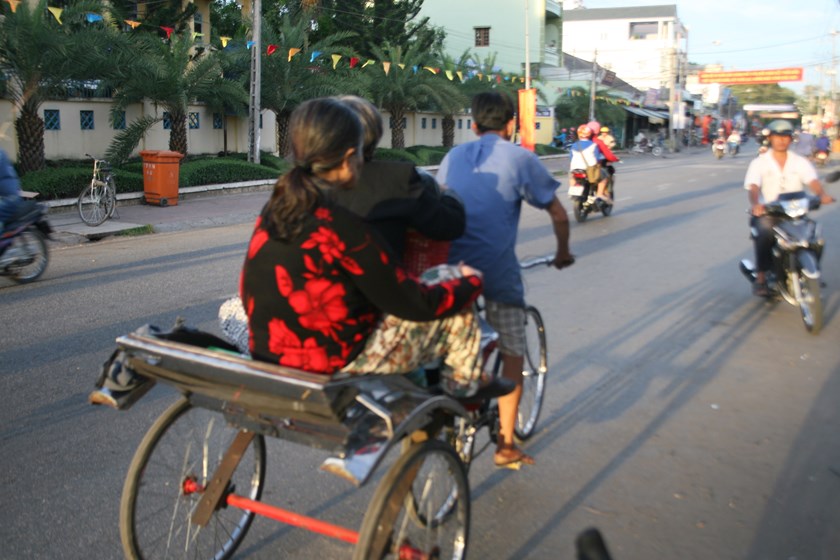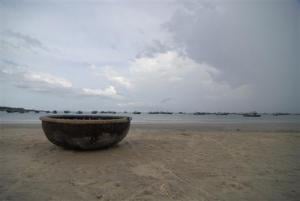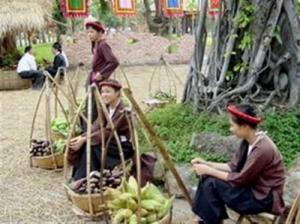Pedicabs of the Mekong Delta: The Last Breed?

The pedicab service used to be the most common and famous mode of public transportation in the Mekong Delta. Consisting of a normal bicycle with a large two-wheeled trailer attached to it where passengers sit, it is locally known as Xe loi, Xe dap loi or Xich lo. But with the introduction of more modern and even cheaper vehicles for hire recently, the traditional service is in serious danger of being totally obliterated.
Pedicabs first arrived in the Mekong Delta during the French colonial period (1884-1945) for the specific purpose of replacing the rickshaws. It proved to be more practical and comfortable that it soon mushroomed in the place, hired by both local residents and foreign tourists. They became so in demand that drivers started working as early as 3 a.m. A personal relationship developed between the passengers and drivers, too that the latter gained regular customers, being contacted to provide exclusive services like carrying products to be delivered to the market. Most regular passengers were stall owners who needed vehicles to transport their wares to their stores. A standard pedicab fare is VND50,000 (U.S.$2.30) for a one-way trip for one passengers. For two people riding the vehicle at the same time, the fare becomes lower at VDN30,000 each.
When motorized public transportation like buses and the Xe om (motorized taxi) began to proliferate in the 1990s, the pedicab service became less popular. Originally exceeding 50 in number and can be found in almost every corner of the area, there are now only about 12 pedicabs that can be seen and only concentrated in the district of Chau Doc, in the province of An Giang. Only foreigners usually hire the vehicle nowadays to visit known tourist attractions such as the Sam Mountain, situated about six kilometres from the local market.
Many pedicab drivers started to migrate to Ho Chi Minh City and other nearby provinces in search of greener pastures, so to speak. They applied for a job in factories which at that time became the better choice compared to driving pedicabs in terms of financial stability.
Inspite of the bleak state of the pedicab service in the Mekong Delta recently though, the drivers are surprisingly still optimistic about the situation. Some, if not many or even all, believe that staying at Chau Doc District and continue driving the pedicab still offer them the better option than taking their chances at far and unfamiliar places. They stand on the conviction that residing near the border of Cambodia provides them with many favourable financial circumstances. The district is also rich in water resources, especially fish, which pedicab drivers believe will sustain them of their most primal need: food.
Most importantly, the pride of the pedicab drivers in their work did not wane despite the current negative direction of their livelihood. They continue to be proud of what they do and as much as they can, refuse help from passengers in situations like the vehicle has to be pushed upward a slope and other difficult circumstances. For them, driving a pedicab entails more than just directing the vehicle, but more so taking full responsibility of all aspects of the profession.
Chau Doc District is one of the few communities which ignored the ban on three-wheeled vehicles in 2004 because of its unwavering pride and faith in what can be considered as one of the traditions in the Mekong Delta. Along with the positive attitude of the drivers, the pedicab service may just outlive even the most modern and advanced modes of transportation.









